Finals season is fast approaching, and while I’m lucky not to have exams this year, I’ve had to go through it a couple of times – so I have several tips to share with you! In particular, one of the things that I’ve struggled with the most over the years is time management. When you have more than one exam, plus a final paper or two, how do you best manage your time? To do just that, I come up with a finals study plan, which has saved me a lot of stress over the years. In this post, I’ll show you how I make it.
Some of the following links are affiliate links, marked by an asterisk (*). Read about affiliate links and my disclosure here.
All you need to make a finals study plan is a few sheets of paper and some writing tools. I love to color code things, so I’m currently really into these colored pens,* which I bought at a local office store but you can also get on Amazon.* I like that they are colorful, long-lasting, and don’t bleed through paper, which makes them great for color-coding.
1. Write out your upcoming exams
How to make a study plan – write it out
On a piece of paper, write out which exams you have to take, leaving a few lines between each exam. I like to use different colored pens for each exam for the sake of clarity later. I also numbered them according to difficulty, with Neuroscience the most difficult and Spanish the least in this example.
2. Divide each exam into study units
How to make a study plan – divide and conquer
In many cases, your study units will define themselves; for example, if you’ve gone over five chapters in your Spanish class, then each of those chapters is a study unit. For other classes, however, the units may be less clear. If that’s the case for one of your exams, try dividing the material by topic, historical period, book, or article. In the example above, you can see that the World History exam is divided by readings.
Write these study units down below your exam titles. Then assign each one a number according to difficulty, with 10 being the most difficult. These rankings will come in handy when you are devising your study plan.
3. Divide your units by days
How to make a study plan – divide the units
Next, on a new sheet of paper (or the back of the old one), write down how many days you have for each upcoming exam. Now divide the units you have per days. For example, in the picture above, there are six days until my Spanish exam, and five units for my Spanish class. This leaves me one day for each unit, plus an extra day for overall review.
4. Order your units
In the above picture, you can see that I’ve written “in order” under each exam. After that, I’ve used the difficulty ratings we wrote out to put the most difficult units first. By studying harder material earlier on, you allow more time to get comfortable with the material, contact your professor with any questions, and let the information sink in.
5. Chart your study plan on a calendar
How to make a study plan – chart it on a calendar
Now it’s time to write down your study plan in a planner or calendar. Use your different colors to write down the date of each of your exams (optionally, you can circle or highlight them with another color so they catch your eye). Now work backwards from those dates, writing down the material that you’ll be studying each day. Leave a little wiggle room to balance your schedule, so that you’re not doing all of the hardest material on the first day; you can see in the below picture that I didn’t study history ever day, so that I had more time to work on my more challenging Neuroscience exam.
How to make a study plan – the final stage!
And voila! That’s how I plan and make my finals study plans. Feel free to ask me below if you have any questions!
How do you prepare for finals?

This post was originally published SaraLaughed.com. It has been modified and improved for use at College Compass with permission of the author.



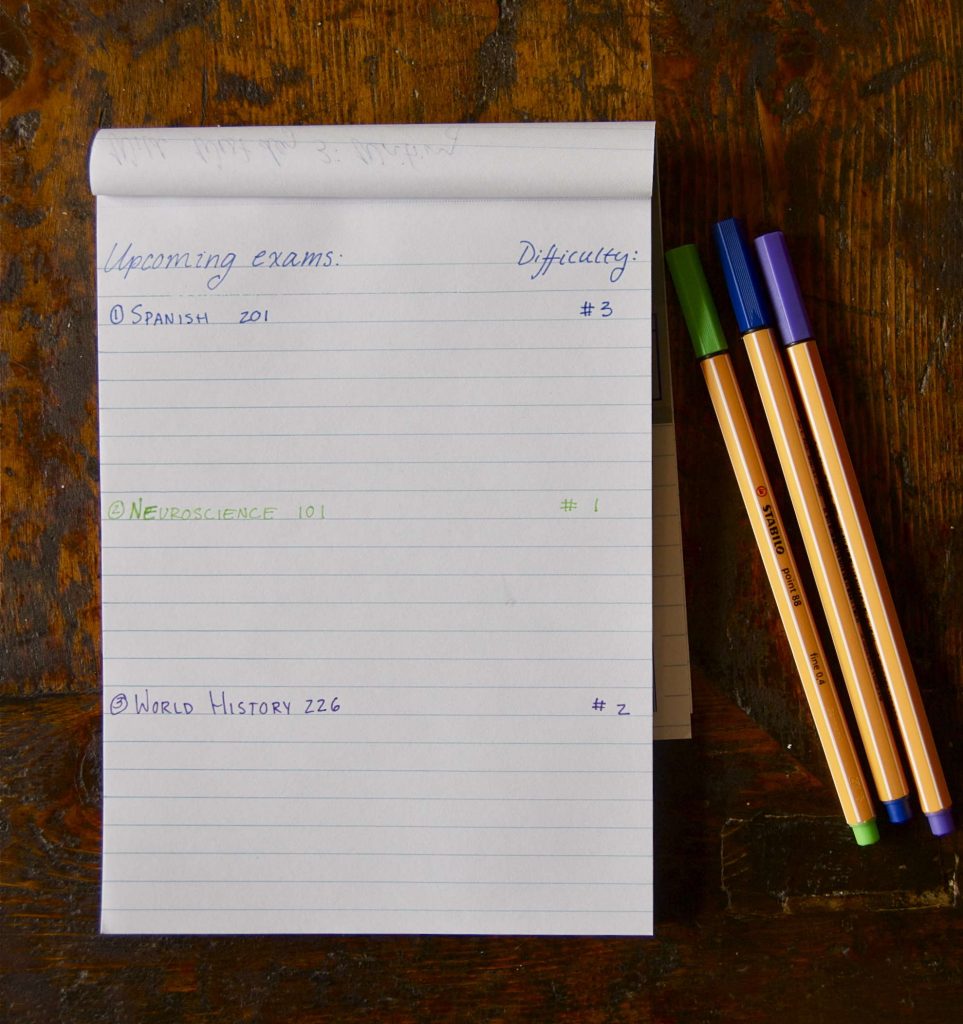
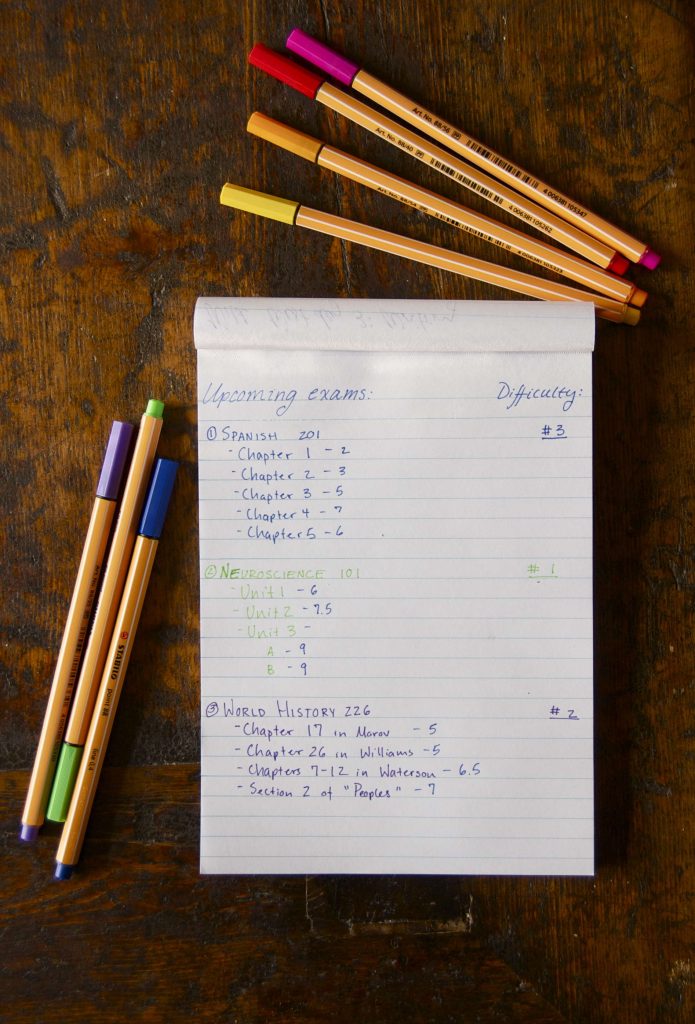
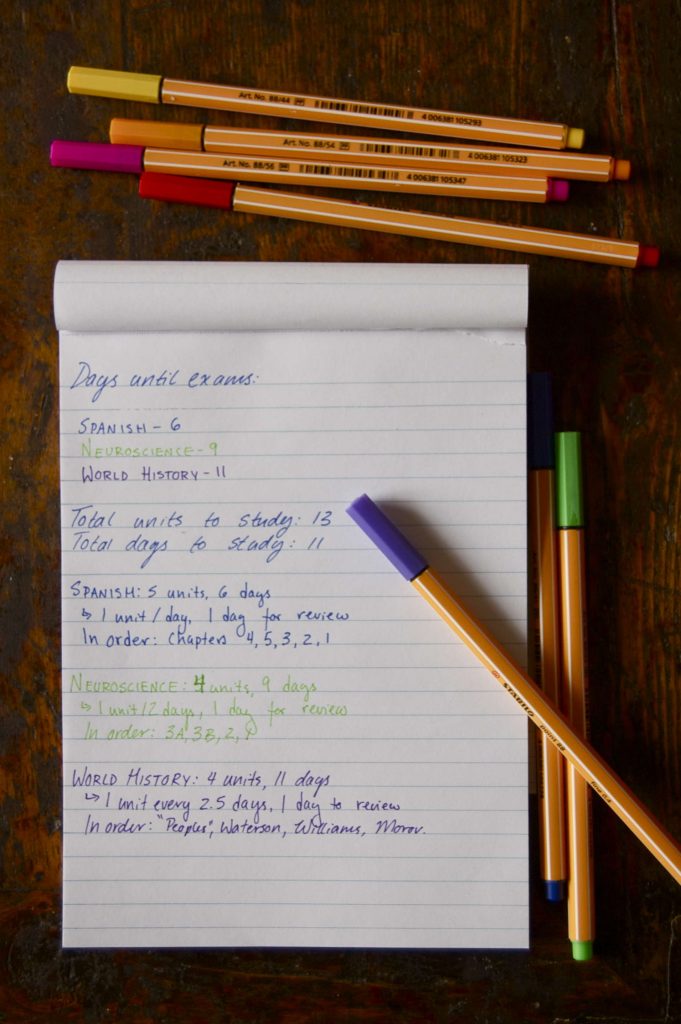
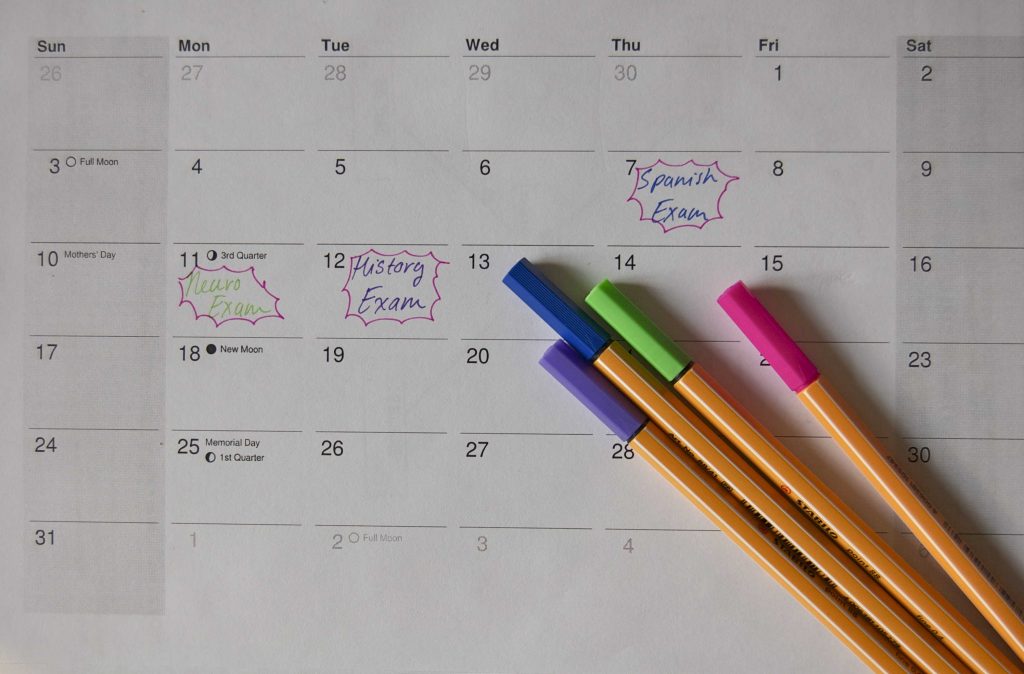
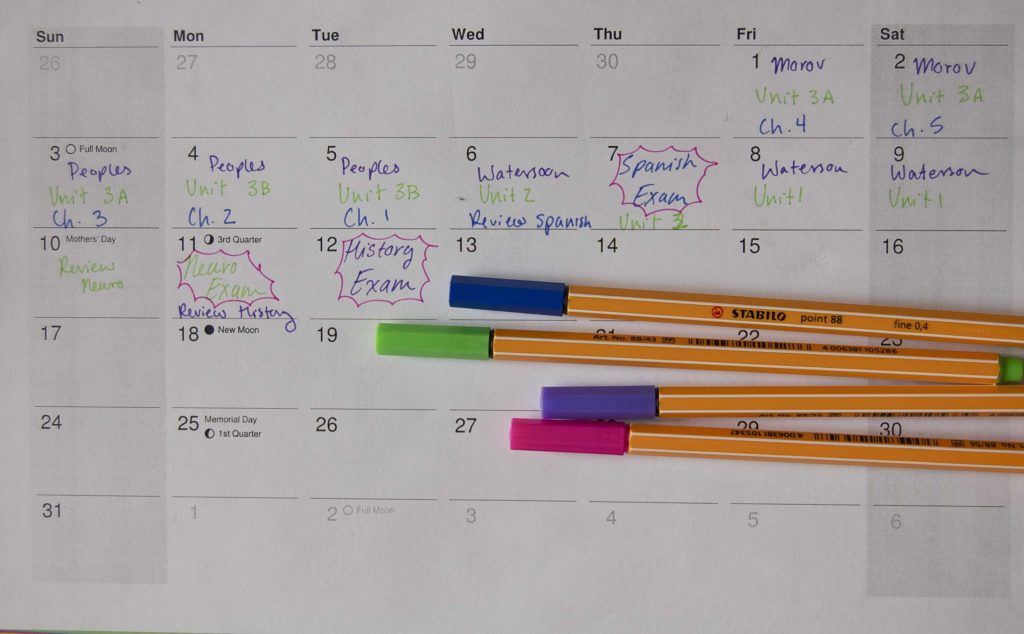

Wow! Thanks a LOT! I’ll try this on my upcoming midterm exams just to practice for the finals. I really appreciate this kind of help for struggling students like me.